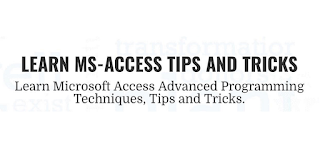Introduction
Making a Database Truly Secure
When you create a new Workgroup Information File, as part of the Microsoft Access Security implementation, it is important that the following two steps you follow immediately after creating the new Workgroup Information File (mdw) file on a priority basis:
Create a new Administrator User ID (say myAdmin or whatever name you like) for you and join yourself as a member of the Admins Group Account.
Remove the default Admin User Account from the Admins Group. If this is not done then your database is not secure and anybody can open and use it when MS Office Software is re-installed.
From now on, you must use the new User ID myAdmin to log in as Administrator of the Databases that use this new common Workgroup Information File.
One more thing, the databases that you create after login with the new User Name myAdmin, this User Account will be the Owner of that Database and other Objects within it.
Remember the Owner of the Database has full authority on all Objects including Administrative Authority (like a member of the Admins Group) to assign permissions to Database Objects and to transfer Ownership of Objects to other Users as well. When the ownership of a particular Object is given to an ordinary User, he has full authority to that object to Run, Modify, or Delete that object.
Assign Object-wise Access Rights to User-Group.
You must implement Object-wise access rights to User Groups before you install your Project for public use. This is done manually, from Tools - ->Security - ->User and Group Permission.
The procedure also has the first priority step, like the above two steps mentioned in the Workgroup Information File. That is to remove All Permissions of all Objects for the Users Group Account. Without this step, whatever permission settings you assign to the Objects (Forms, Report, and so on) will have no effect and Users will have full authority for Design Changes or whatever they want to do with them.
This is done manually and takes some time to go through all groups of Objects to remove all permissions of the Users Group Account. Since this step is required for all new Projects I thought it was better to automate it and here it is for you to try it out. This program is written purely on my own experience with the VBA-based procedures and you may use it at your own risk
Automated Removal of Object-level Permissions.
Copy and paste the following Program into a Standard Module and save it.
Public Function DefaultUsersGrp(ByVal DatabasePathName As String) As Boolean '---------------------------------------------------------------------------- 'Author : a.p.r. pillai 'Date : March-2010 'Purpose: Remove All Permissions from Users Group Security Account 'All Rights Reserved by www.msaccesstips.com '---------------------------------------------------------------------------- Dim wsp As Workspace, db As Database, ctr As Container Dim GroupName As String, doc As Document Dim L4 As String Const DB_FULLNO = &H60000 Const OBJS_FULLNO = &H2FE01 'Remove All Permissions on Containers & documents 'for USERS Group On Error GoTo DefaultUsersGrp_Err Set wsp = DBEngine.Workspaces(0) Set db = wsp.OpenDatabase(DatabasePathName) wsp.Groups.Refresh GroupName = "Users" Set ctr = db.Containers("Databases") Set doc = ctr.Documents("MSysDb") doc.UserName = GroupNamedoc.Permissions = DB_FULLNO Set ctr = db.Containers("Tables") GoSub SetPermission Set ctr = db.Containers("Forms") GoSub SetPermission Set ctr = db.Containers("Reports") GoSub SetPermission Set ctr = db.Containers("Scripts") GoSub SetPermission Set ctr = db.Containers("Modules") GoSub SetPermission DefaultUsers_Grp = False DefaultUsers_Grp_Exit: Set db = Nothing Set wsp = Nothing Exit Function SetPermission: For Each doc In ctr.Documents doc.UserName = GroupName If ctr.Name = "Tables" Then L4 = Left$(docName, 4) If L4 = "MSys" Or L4 = "~sq_" Then GoTo nextloopxxx End If End If doc.Permissions = OBJS_FULLNO nextloopxxx: NextReturn DefaultUsersGrp_Err: MsgBox Err & ": " & Err.Description DefaultUsersGrp = True Resume DefaultUsersGrp_Exit End FunctionPoints to Note.
Remember this Program is run for an external Database that you would like to remove All Permissions of all Objects for the Users Group Account.
Before you run this program, open the Database that you are targeting and check the current permission settings of all Objects for the Users Group Account. Try the program on a copy of the original Database you are targeting.
Open the Database with the above Code, if you have closed it.
Press Alt+F11 to display the VBA Editing Window and press Ctrl+G to display the Debug Window.
Type the following and press Enter Key:
Default UsersGrp "C:\My Documents\myTest.mdb"
- Replace the database Pathname in quotes with your own database name.
You may run the Program from a Command Button Click Event Procedure from a Form.
- Open your Test Database and check the current status of the permissions settings of the Users Group Account. The check marks from all the permission options you will find disappeared.















No comments:
Post a Comment
Comments subject to moderation before publishing.